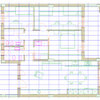Flooring advice
Victoria
6 anni fa

Sponsorizzato
Ricarica la pagina per non vedere più questo specifico annuncio
Not sure i'm reading the above correctly, or if the other guys are describing how to make sure your concrete floor is laid on top of your under floor heating.
However, I believe that if your under floor heating is already laid, and you have your screed layer on top of it already, then you don't need more insulation, as it should already be under the screed. This article describes the layers:- Concrete floor with under-floor heating............. I'm no expert in this field, so I can only go on what i've experienced and seen for myself, or read about.
The way i read your problem, is that you already have underfloor heating and your floor is finished, therefore, you don't need anything else on it for tiles. Laminate yes, wood floor, yes, tiles no. You can't lay tiles on top of matting or any type of insulation, they have to be laid on the concrete or screed.
Just been watching this video.................never heard of decoupling matting or uncoupling matting.............then found out as angelaew says it's predominantly used for preventing cracking. Never seen it anywhere, but then I gather it's used a lot where substrates may move, ie newly laid concrete which can contain moisture and you may be in a hurry to lay your ceramic floor, or commonly if you are trying to lay tiles on ply over the top of floorboards, as the floor could still have movement. Wood is always prone to expanding and contracting.
It's also used a lot in areas where waterproofing is required ie bathrooms and sometimes kitchens.
Youtube video on uncoupling membrane.
I've always used flexible adhesive and grout, but it's nice to learn about new stuff! Interesting.
See you can teach an old dog new tricks.


Ricarica la pagina per non vedere più questo specifico annuncio
Houzz utilizza cookie e tecnologie simili per personalizzare la mia esperienza, fornire contenuti per me rilevanti e migliorare i prodotti e i servizi di Houzz. Premendo su "Accetta", acconsento all'utilizzo dei cookie, descritto ulteriormente nell'Informativa sui cookie. Posso rifiutare i cookie non necessari cliccando su "Imposta le preferenze".




User